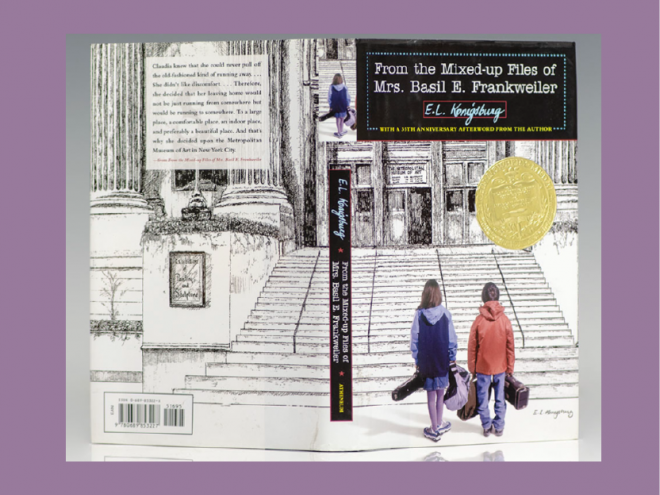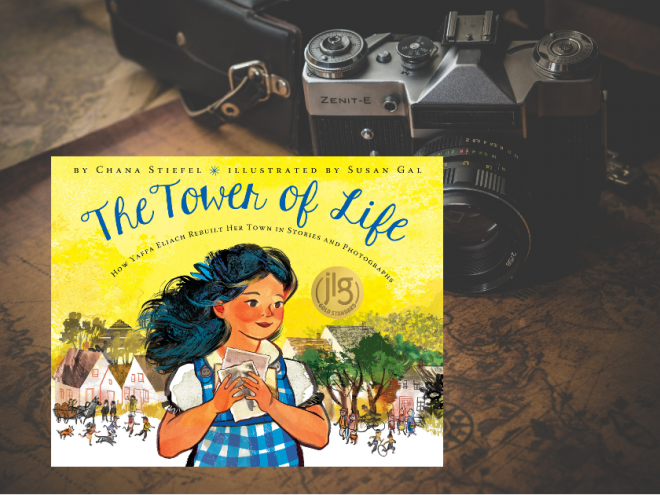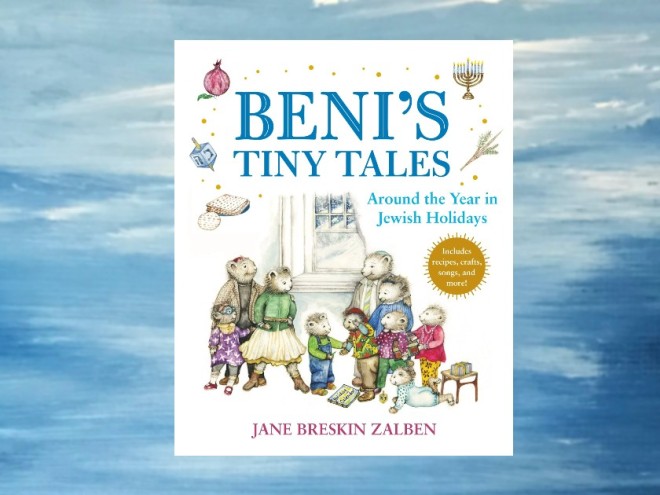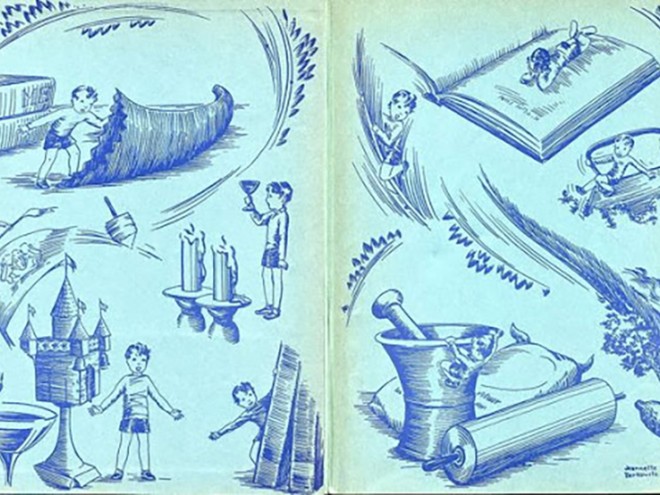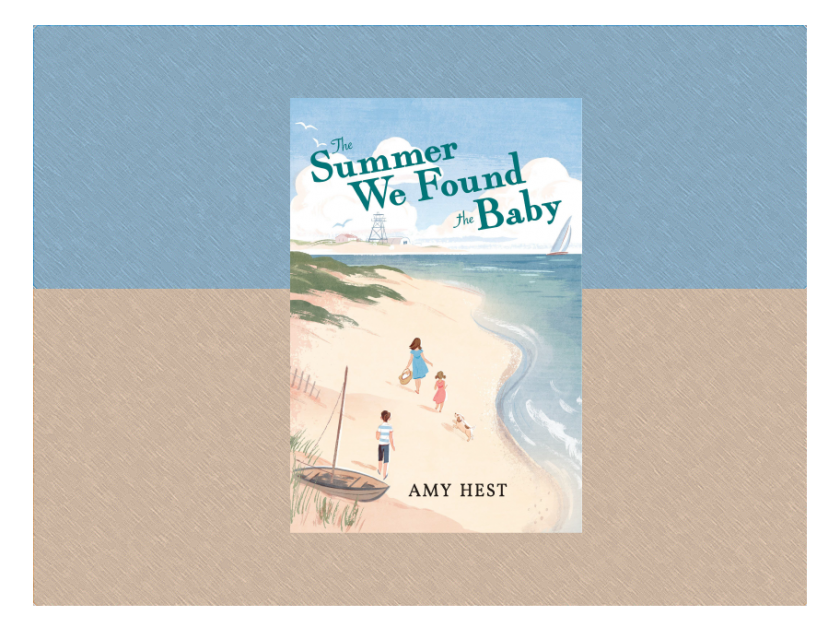
Emily Schneider spoke with children’s author Amy Hest about her most recent book, The Summer We Found the Baby, along with her earlier works which reflect the Jewish experience as well as her own life.
Emily Schneider: There’s a lot of ongoing discussion, among both authors and readers, about the need for Jewish stories with characters who are only incidentally Jewish, as well for others where Jewish identity really defines who the characters are. You’ve given us both kinds of books. I’d like to begin by asking about your most recent novel, The Summer We Found the Baby. For readers who haven’t yet read this terrific book, it takes place during World War II. It’s about two sisters, Julie and Martha Sweet, who are eleven and six. Their mother has died, and their father takes them from New York City to spend the summer in a small Long Island community.They meet a boy their own age, Bruno Ben-Eli, and they all become friends, with a little disagreement now and then. It sounds like a typical middle-grade story…until they find the baby! How did you come to write this story?
Amy Hest: I guess it all started with my aunt Harriet, who was a nice Jewish girl from the Bronx. I was a great spy as a little girl. I always loved listening to the grownups’ stories. Those were the most interesting to me and I managed to hear a lot of stories that I probably wasn’t supposed to hear. One of them was about Aunt Harriet and how she had gone to this party as a teenager and met a nice Jewish boy. One thing led to another and it was 1942. He went off to, what is it called, boot camp?
ES: Yes, boot camp or basic training.
AH: To basic training in Mississippi. They had dated a while, but after he left she was very sad and there were letters back and forth. And then one day Harriet, unbeknownst to anyone else in the family, boarded the train to Mississippi and she met up with her boyfriend there; she was like eighteen years old. And, a few days later, she came back to the city and she was married. There was a big brouhaha in the family. I learned all this from my mother, who was very judgmental, because Harriet went there, and she insisted on getting married; he was so young, and he was going to war. All I could hear was the “I love yous” in that story; I was maybe five or six or seven when I first heard it. When he came back from the war, they were together forever until everybody died in their nineties. They had the best marriage. So, it turned out to be very good. But that romantic story was in the back of my mind when I wrote this book, and I added a baby to the mix. And a library and all the things that are very familiar to me, that make me comfortable; that’s where it began.
ES: So, you, as a child, were not going to be as judgmental as your mother. That was a great quality for a future writer! You narrate the book, as you’ve done in several of your other works, from the perspective of the three children. It struck me how completely authentic those voices are. You don’t allow an adult perspective to intrude in an artificial way. Why do you think that you often prefer writing from the point of view of a child?
AH: It’s interesting. I guess I really get into the head of the child. I am that child, definitely. With each of those three children and, and in all of my books, there were pieces of me. Each child is very, very much me. I can go back in time. I had this facility, I don’t know why, but I had this facility to be able to go back in time and to get into a particular voice for a particular age. I know how the voice sounds. I talk out loud a lot when I’m writing, so I hear how it sounds. I hear how an eleven-year-old sounds. Everything in that book is authentic to me. Camp Mitchel is based on Mitchel Field. I grew up in East Meadow, Long Island, and there was an Air Force base blocks from my home. It was called Mitchel Field. I used the name to get me closer to that Air Force base, the army base that I completely made up in the book. When I was writing, I could actually see it. This is very unusual for me. I’m not really a visual person, but I could actually see it as if a movie were unfolding in front of my eyes. I can see the whole sweep of that beach, and the army base at the end of the beach and the kids on the beach. I could literally see it. I had to watch the movie in my head and then figure out how to write it.
ES: It’s unmistakable when you read this book how very cinematic it is. The reader has the same sense you just described, like watching a movie. It has some of the tropes from movies about World War II made during that time. But those movies never show the perspective of a child the way you do. How did you decide to bring in finding the baby on the steps of the library?
AH: It was the first sentence of the book. I should find the little scrap of paper from 2005; that’s when I started this book. That’s where I wrote, “I’m the one who found her.” I knew the whole story before I wrote a word. I just knew it. And that’s very unusual for me. I just had to spend the next ten or twelve or fourteen years figuring out how to write it.
ES: I have to ask you about the Ben-Elis. Their name is unmistakably Jewish. In fact, it’s even full of Jewish symbolism, because there’s Bruno and his older brother, Benjamin Ben Eli. “Ben” means “son of” in Hebrew. But you chose not to make that identity part of the plot in any overt way.
AH: It was not deliberate. They just are — they just exist — and, in my brain, they are Jewish. Everybody’s Jewish in this book. Julie and Martha are also Jewish. But nothing in the story needed their Judaism to come out. There was no Jewish holiday, no bar mitzvah coming up. They just are Jewish,their mannerisms, everything. The name, Ben-Eli? Okay. I stole that name… my son, who is now nearly forty-two years old, went to nursery school with a girl whose last name was Ben-Eli. And I loved that name. I’ve been waiting all these years to use the name Ben-Eli and it just had to be that name.
ES: Another Ben-Eli I’d like to ask about is Mrs. Ben-Eli.
AH: I love her.
ES: There’s a lot of motherhood in this book. And in many ways, Mrs. Ben-Eli seemed to me the ultimate Jewish mother. I don’t mean that in a stereotypical, patronizing way. I mean it as an homage. Could you talk a little bit about the character of this wonderfully strong maternal woman, who’s also suffering herself because she’s worried about her son in the service?
AH: She’s just, maybe the mother I would like to be. Maybe she is my mother. The World War II background is my parents. I’ve always wanted to emphasize that. My dad went to war for three years, but they did not get married till afterwards. And I have every single letter that my father ever wrote to my mother for three years.I have a booklet of them right here behind me. I have never read through them. It’s very hard to read that about your parents. I was born in 1950, after the war, but that whole era is so romantic to me. My mom used to talk a lot about it. My dad, never. But my mom would talk about what it would be like, what it was like to be here while the love of her life was at war, and how she wrote to him every single morning. It was the first thing she did when she got to work. I knew a lot about his homecoming at Penn Station. So, every time I’m in Penn Station, I’m awash in what it was like to come back to Penn Station that day. I loved weaving these characters’ lives together so that there was an understated understanding of what each one needed. Mrs. Ben-Eli seemed to know what those little girls needed without falling and fawning all over them.
I had this facility, I don’t know why, but I had this facility to be able to go back in time and to get into a particular voice for a particular age. I know how the voice sounds. I talk out loud a lot when I’m writing, so I hear how it sounds.
ES: There is one more mother in that book, someone many of us hold in such high esteem, Eleanor Roosevelt. And she’s not just a cameo. Martha actually wishes that Eleanor Roosevelt could be her grandmother. How did you decide to bring Eleanor Roosevelt into this book and make her a linchpin of the plot?
AH: Years ago, I used to go visit schools all over the country. I was at a school on Long Island, in Carle Place, maybe twenty-five years ago. Having grown up in East Meadow, I was always very happy to go on the Long Island railroad. It made me very nostalgic. So, when I got to Carle Place, the librarian happened to mention that in this very old school, there was a library, and that Eleanor Roosevelt had dedicated the library.
ES: Just like in the book.
AH: I remember thinking, “Oh, this is going to go in a book someday.” It’s at least twenty-five years ago that I heard that tidbit. And it just went in here and stayed there for all those years. Who could not love Eleanor Roosevelt? And then I did a little reading. Not a lot. I don’t usually do research on my books. My research is here, my heart. Or I look at pictures of myself when I was a certain age, or my mother at a certain age. That’s my research. But in this case, I needed to find out something about her, what kind of desserts Eleanor Roosevelt liked. And I was able to find out that she loved pink clouds on angel food cake. And I got the recipe on the internet.
ES: That was the cake they serve at the library. One of the reasons why the book is so accessible and universal is that it’s relatively light on the history. There is the letter that Mrs. Ben-Eli writes to Mrs. Roosevelt thanking her for visiting the troops. That took place in 1943; she went to the Pacific. We were talking about your parents’ letters. Another novel that you wrote in 1991 and set during World War II, is Love You, Soldier. It’s the first in a trilogy about Katie Roberts, a young Jewish girl living in New York in the first book. In the second book, you actually schlep her to Texas, but in all three of these books, Jewish identity is much more overt. Where did this book begin?
AH: That idea came when I was having lunch one day, maybe in 1988, with a woman who told me a story about her own childhood. She was on a long train trip with her mom, during World War II. She was very little, maybe four or five. At the end of the train trip, her mom got remarried. In the back of my head, I said, “there’s a story here.” And of course, World War II is so dear and so close to me. I feel like I almost lived in the forties. That’s how close it is to me. I love everything about that era.
ES: Because we experienced that partly through our parents, and we internalized it, in a way, almost as if it were a part of our own lives
AH: Yes, and I said, that story that is me, Katie Roberts is Amy. Everything about her is Amy: everything she says, everything she wears, the color of her eyes, her hair. I set this story in my grandparents’ apartment on 109th St. and Riverside Drive, in apartment 3C, because I know that apartment. I know how it smells, how it looks. I know what the staircase and the elevator looked like. I can still close my eyes and see every bit of it. In fact, I walk up there often. All I have to do is walk up the steps into the lobby and I’m there.
ES: Who was Mrs. Leitstein?
AH: That’s my grandmother, her maiden name is Leitstein.
ES: So, she’s another mother and grandmother figure, going back to The Summer We Found the Baby. What made you include, in this book, more explicitly Jewish scenes, the Shabbos dinners and a Seder?
AH: It’s a good question. And I don’t really have a very brilliant answer for you. It just felt like I needed to talk about it more in those books. I needed those people who celebrated Judaism in their lives, that it was so meaningful to them that it needed to be said. There was so much else going on in The Summer We Found the Baby, but you knew, you just knew — of course they’re Jewish.
ES: Each story had its own demands.
AH: I did add some Jewish content to a different book, Letters to Leo, the sequel to Remembering Mrs. Rossi.
ES: Those books dealt with grief.
AH: Yes. PJ Library wanted to include the book, so I added a few very subtle things in Letters to Leo, because they worked within the book.
ES: You’ve also written the text for picture books which raise the same issue. You’ve worked with many wonderful illustrators, including one of my favorites, Amy Schwartz. I’m thinking of The Purple Coat from 1986, Gabby Growing Up, from 1998 and, Fancy Aunt Jess from 1990. The Purple Coat has beautiful, evocative pictures of mid-twentieth-century New York.
AH: I think she did the best job ever. I just love it! It’s still in print, which is amazing. Amy just got it. And she didn’t even grow up in New York. She grew up on the West Coast, but really she got it.
ES: It’s a wonderful story about a little girl whose grandfather is a tailor, and she doesn’t want the ordinary navy-blue coat which he usually creates for her. She wants a purple coat.
Everything is a story and the characters. It’s the people I write about. I have to love them, and to really care about them. If I’m not worrying about them and falling in love with them, I have to throw out the manuscript
AH: That story is mine in so many ways. I had a navy-blue coat my whole entire life, and my grandfather was a tailor; he worked in the city and I took the train with my mom. But I never got a purple coat or even asked for one. It was never even on the horizon. But Sam, my older child, he wore navy blue t‑shirts navy socks and sneakers — navy everything. And one day when he was just learning to walk and talk, he said to me, “Mommy, I want purple socks.” And I said, “Sam, in this house, we wear navy blue.” And he went on and on and on about the purple socks. And I was able to find some. I brought elements from my own childhood, and the purple socks were the trigger to write.
ES: In the book you make the grandparent be the magnanimous adult who understands that the child needs something.
AH: Yes. And I didn’t have a grandfather who made all my problems go away. But he and I did used to eat together, which I put in the book.
ES: Another book which does have direct Jewish content is Fancy Aunt Jess.This time it’s not a grandparent, but an aunt. She’s a little bit of a nonconformist, very glamorous. She’s not going to get married unless she meets someone who gives her goosebumps. Then she meets a nice man in synagogue, and on the last page of the book, they’re under the chuppah getting married. But I have to believe that Fancy Aunt Jess is not going to give up her dreams. How did you come up with the idea for this free spirit?
AH: On an airplane in 1987, when my daughter was five. I have a cousin, Jessica, who’s very fancy, and my little daughter was just mesmerized by Jessica, who wasn’t married. The whole family was pushing her, looking for a man for Jessica, but no one was acceptable to her. My daughter was just in love with this glamorous woman who could do no wrong!
ES: In the book, they meet in the synagogue and get married there. When she finds someone who gives her goosebumps, it happens in a Jewish context, with no explanation needed. Family is also a big part of your immigrant narrative, When Jessie Came Across the Sea, illustrated with striking paintings by P.J. Lynch. This kind of story is still painfully relevant. You also have a Jewish grandmother in that book. Why did you decide to take on writing an immigrant story and making it your own?
AH: It started as two different stories. At first, it was called The Girl Who Sold Lace and The Shoemaker’s Son.
ES: That sounds more like a fable.
AH: Yes, and I remember my editor called me on a Sunday morning and she said that the manuscript had been hanging around in her office for a long time. She said, you know, I’m sitting here with another editor, and we’re looking at this manuscript. But we need you to pull it together and make it her story, not two different stories. Can you do that? And we have a fabulous artist from Ireland, P.J. Lynch. If you can do that, Amy, we can get him on board. I didn’t know the artist. But something clicked in my mind; it’s based on my own family. Jessie is the name of my great-grandmother. My mother used to talk about her mother a lot, and her husband’s name was Lou.
ES: The shoemaker in the book.
AH: Right. Actually, he was a tailor for gentlemen in Parliament. That’s what I was told, but I had to make it my story. I had to find the “me” in this story, and I couldn’t find it, at first. It wasn’t working until I wrote something about Jessie wearing her mother’s wedding band. That’s because I wear my mother’s wedding band; that makes me close to her. And I wear my father’s watch. That’s all I needed. As soon as I had something about the wedding band, I was in the story. I knew who she was. And I also knew she hated sewing, because there’s nothing I hate more. My mom was a great seamstress. But I am the worst. So, it was easy to make Jessie unhappy about sewing. There’s also a lot about reading in the book, and there’s the separation, which was very hard for me to write. In the scene aboard the ship, rain pours down Jessie’s back. I reconstructed that scene from something my mom once told me about my dad, whose mother died when he was very young. She and my dad were dating then, and my mother went to the funeral. She was standing to the side and watching my father bury his mother and it was raining. The rain went down the back of his collar. I couldn’t lose that image. That’s why it’s raining in that wrenching moment in the book when she leaves her grandmother. When I bring them back together at the end, it was my way of bringing my grandmother back into my life. My grandmother died many years ago, but I was able to bring her back and to be with her in that scene.
ES: This is another one of your books with a supportive grandmother, who insists that Jessie also learn when the boys in the village are learning. She wants her to learn to read and also to sew. And Jessie wants her grandmother to be literate. These two different generations support one another, a quality that comes through in all your work.
AH: Yes, understanding each other and pushing, but not too much.
ES: Before we end our conversation, I’d like to ask you to comment on what you think it means to be an author of Jewish themed children’s books today. Is it at all different from when you started writing, in terms of standards of representation, or is still just a question of writers being faithful to their own ways of imagining characters?
AH: I think that’s what it is for me. I can’t speak for other authors. I can only write the books that make me comfortable. And the only way I can be comfortable is if I write about myself really, and my family and the things I know; the things I recognize, the things that are important to me, the things that I value. I keep going back to the same themes and maybe that’s boring. Here’s Amy writing another book about a nice family! But these are the things I know, and that are so very important to me. My Jewish roots are so very important to me. I can’t pretend that they’re not.
ES: And they’re still important to children, both Jewish and from other backgrounds, relating to the stories you write.
AH: For me, I guess it’s a story first. Everything is a story and the characters. It’s the people I write about. I have to love them, and to really care about them. If I’m not worrying about them and falling in love with them, I have to throw out the manuscript. Then it’s not a book worth writing. I peel away at the layers until I get to the most basic part, what it is what hurts them. I know what hurts me, what troubles me, and that’s the only thing I can write about.
Emily Schneider writes about literature, feminism, and culture for Tablet, The Forward, The Horn Book, and other publications, and writes about children’s books on her blog. She has a Ph.D. in Romance Languages and Literatures.
